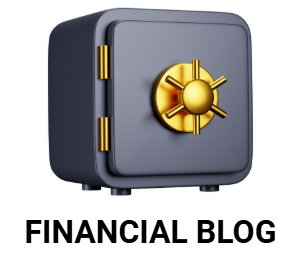You’ve worked hard and followed your budget consistently, so you’ve finally done it — reached the point where you’re making enough money to comfortably cover your needs. Now what?
You might feel a little unsure about what to do with your money, especially if it’s taken several years of hard work to reach this point. That’s normal! Reaching an important goal is exciting, but it also means you have to adjust your priorities and actions.
Now that you don’t have to worry about whether or not you can pay your bills every month, how should you manage your money? Let’s take a look at some of the best strategies to maximize your income, secure your future, and make progress on your next set of financial goals.
Step #1: Define “Enough”: What Does It Mean for You?
Before you start making new plans and strategies for your income, it’s crucial to understand what it really means to have “enough” money. After all, “enough” isn’t a specific number or amount — it’s different for everyone.
For some people, having enough money means knowing they can cover all living expenses every month without having to worry about it. Other people might not feel like they have enough until they can start affording certain luxuries or saving for long-term goals, like retirement or buying a home.
Although the concept of enough is subjective, there are some statistics that can serve as a starting point. A 2022 study showed that emotional well-being and happiness tend to rise with increased income, up to an annual income of approximately $90,000. After that, bigger paychecks don’t seem to contribute to a significant rise in happiness.
However, that number isn’t set in stone. According to a CNBC survey, most Americans believe they need to earn at least $122,000 per year to feel financially healthy.
While survey results like these are a good baseline, they can’t define financial stability for everyone. You’re the only one who can decide when your income is enough to feel financially stable and start focusing on long-term goals instead of monthly bills. So, what is your definition of enough?
Step #2: Maximize Savings to Build Financial Security
Once you’ve determined your personal definition of financial stability and have reached it, you can start focusing on goals beyond immediate expenses. A good first step is to build a financial safety net that includes savings for emergencies.
Most experts recommend saving three to six months worth of living expenses, if possible. If that feels intimidating, start with a smaller goal first, like saving up one month’s worth of expenses. If you’ve already saved enough to cover your living expenses for six months, you can set a bigger goal, like saving enough for an entire year.
An emergency fund is foundational to financial security, and it’s a good first goal after you’re comfortably paying all your bills. In a 2023 Bankrate survey, only 44% of respondents said they could cover the cost of a $1,000 emergency with savings. Making an emergency fund a priority helps prevent an unexpected expense from becoming an overwhelming challenge.
Step #3: Pay Down High-Interest Debt
Do you have any debt? Once you can comfortably cover all your monthly living expenses and have some money saved for an emergency, you can start putting more funds toward debt repayment.
This is especially important if you have any high-interest, unsecured debt, like credit cards or personal loans. Paying off these balances sooner can save you a significant amount on interest — according to Forbes, the average interest rate for credit cards in November 2024 is 28.65%. Once you pay off those high-interest balances, you have more funds to put toward discretionary expenses, retirement, or other long-term goals.
If you’re not sure whether to put your money toward additional savings or debt payments, compare the interest rates. The best rate you can get on a high-yield savings account is typically around 5%. That’s far lower than the average credit card interest rate, so paying off the debt offers a better return than putting that money in a savings account.
Step #4: Invest for Retirement and Long-Term Stability
Now that you have an emergency fund and have paid off those high-interest debts, you can put more money toward long-term goals. The sooner you can save for retirement, the better!
If you’ve already started a 401(k) or an IRA, you can increase your contributions once you’re financially stable. Another option is to expand your retirement savings. If you have a 401(k) through your employer, you might consider opening a Roth IRA and contributing to that as well.
There are limits on how much you can contribute to retirement accounts, so make sure to work with a financial planner or CPA to maximize your retirement savings. If you’re over 50 years old, you can make catch-up contributions that allow you to save more for retirement.
Even a small increase to your retirement savings now can make a big difference later. Thanks to compound interest, saving just 5% more can translate to thousands of extra dollars by the time you retire.
Retirement accounts offer tax advantages, so it’s a good idea to invest there first. If you’re already maxing out your retirement contributions, you can start investing in other vehicles to grow your long-term wealth. The biggest element here is to diversify your investments in both short- and long-term options. This is where speaking with a Certified Financial Planner® comes in!


